'MSV Generation' is a history book that follows the history of MSV (Mobile Suit Variations) from their birth to their demise.

On Wednesday, May 16, 2018, Ohta Publishing published ' MSV Generation: A Gunpla Revolution by Us, for Us .' The author is model culture writer
MSV Generation 'Gunpla Revolution' by us, for us - Ohta Publishing
http://www.ohtabooks.com/publish/2018/05/16105913.html

The cover features the box art for the first release in the MSV series, 'MS-06R Zaku II,' created by
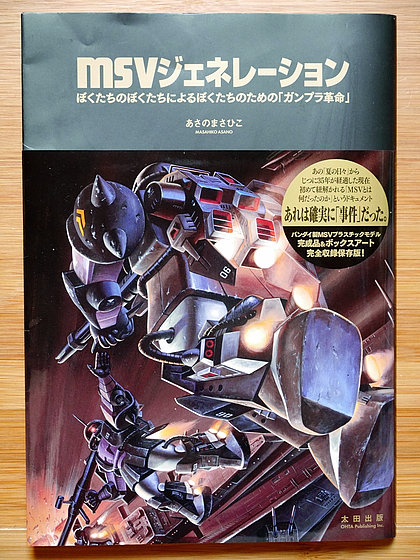
First, there are the color pages. 'Mokei Joho' is a new product information magazine published by Bandai, and this red machine is a Zaku II by
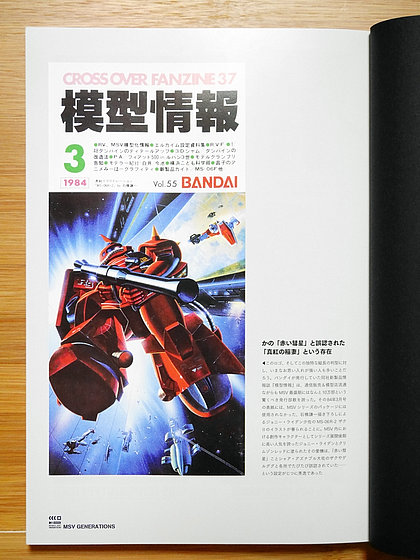
A variety of box art that will expand your imagination.
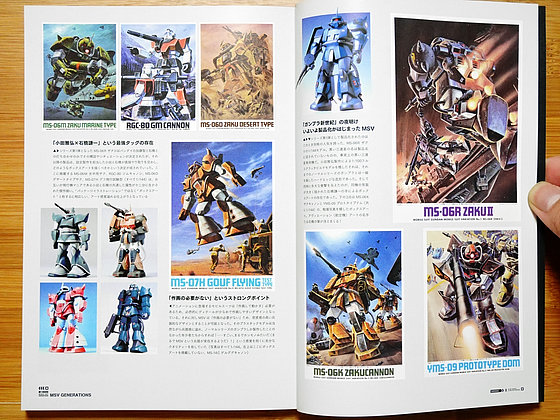
It also includes illustrations of 'Zaku Variations' by Kunio Okawara, which was the catalyst for the creation of MSV.

According to the prologue, the author, Asano, had long thought, 'I'd like to read something that's properly compiled (about MSV),' and 'Someone will put it together someday,' but finally he decided that he had to do it himself and took action to create this book.

The table of contents looks something like this. First, there's 'Prologue: MSV as the 'Woodstock Festival'', 'Chapter 1: The Eve of the Birth of MSV (February 1980 - March 1982)', 'Chapter 2: The Impact of 'Zero Rokuar' (March - December 1982)', 'Chapter 3: The Start of Production, and Straight Wins (December 1982 - June 1983)', and 'Chapter 4: The Destined 'Run Out of Ammo' (July 1983 - September 1984)'.

It continues with 'Chapter 5: The End of the Gunpla Revolution (October 1984 - October 1985),' 'Special Feature 1: An interview with Daitoku Tetsuo, editor-in-chief of OUT's special issue 'Space Warriors Gundam Century,' 'Special Feature 2: An interview with 1/144 MS-06R Black Tri-Stars Zaku II designer and former Bandai employee Muramatsu Masatoshi,' 'Epilogue: A slightly longer afterword for Kato Satoshi,' and 'The Complete MSV Lineup 34.'

'Chapter 1: The Eve of the Birth of MSV' chronicles the history of 'Gundam Plastic Model Kits (hereafter referred to as Gunpla)' from when Bandai acquired the merchandising rights for Mobile Suit Gundam to the appearance of MSV.

The chapter headings look like this:
- Acquiring merchandise rights after the show aired and becoming a huge hit with the decision to make a feature film
・Yasui's encounter with Bandai Model and Streambase
・'Zaku Variations' born from an unexpected opportunity
・'HOW TO BUILD GUNDAM' Shock!
・The publication of one book determined the fate of Gunpla
・The Black Tri-Stars R-Type Zaku has finally been designed
'Yasui' refers to
Anime Graph Book: Mobile Suit Gundam Movie Edition | Yoshikazu Yasuhiko, Kunio Okawara | Books | Mail Order | Amazon
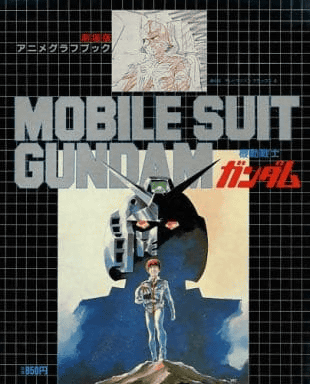
Stream Base is a group of legendary modelers who would later support the development of MSV. Asano points out that the special issue of the monthly Hobby Japan magazine 'HOW TO BUILD GUNDAM,' which features a collection of Gunpla modifications and examples by talented professional modelers including Stream Base, marks the transition from Phase 1, when plastic models were built according to the anime settings and package illustrations, to Phase 2, when MS are considered to be real weapons and finished realistically.
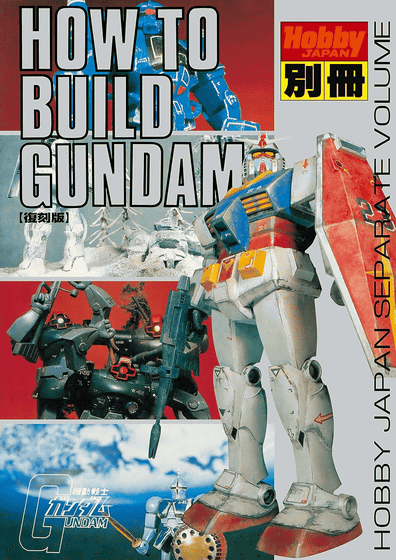
'GUNDAM CENTURY,' published by Minori Shobo in 1981, is said to have 'determined the fate of Gunpla thereafter.' Minori Shobo went bankrupt in 1995, but a reprint was published by Kisohsha in 2000. The book was a 'Gundam fan fiction magazine' created by Matsuzaki Kenichi, who wrote the screenplay for the main story, and Miyatake Kazutaka and Kawamori Shoji of Studio Nue, known for 'The Super Dimension Fortress Macross.' Many of its intricate settings were later incorporated into the Gundam world, making a major contribution to its global expansion.
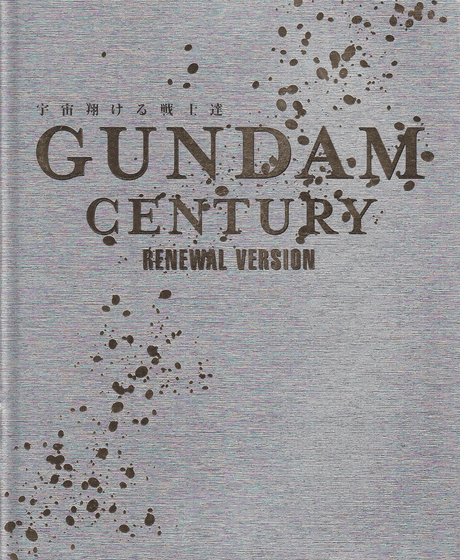
The second chapter, 'The Impact of 'Zero Rokuar'', which follows the first chapter, which was the prehistory of MSV, describes the period when MSV was developing into a collection of design drawings and sample models.

The chapter headings look like this:
・The arrival of 'Zero Rokuar' accelerated the momentum for MSV product development
・“HOW TO BUILD GUNDAM” shocks again!
・Is it really acceptable for a children's manga magazine to be so focused on Gundam modeling?
・'MSV Promotion' making full use of Bonbon magazine
'HOW TO BUILD GUNDAM 2,' published around this time, featured examples of even more extensive modifications and full scratch builds than 'HOW TO BUILD GUNDAM,' and is said to have inspired both admiration and despair among young modelers.
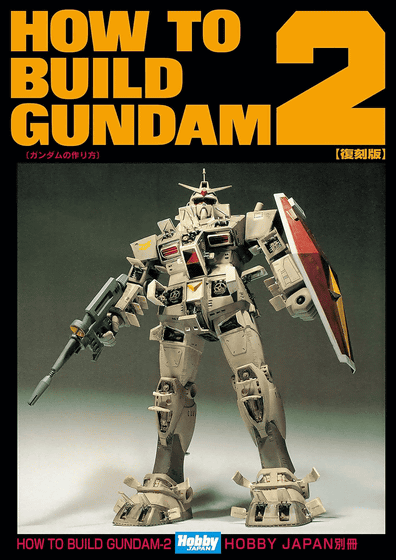
Yasui showed his skills in 'Comic Bonbon', which was launched in 1981, and with a special feature on Gundam model kits and 'Plamo Kyoshiro', he started a trend of 'elementary school students stepping into the world of Gundam model kits'.
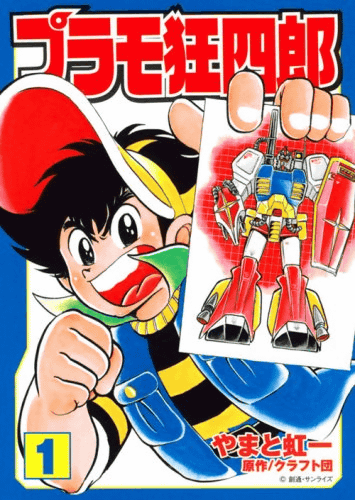
The third chapter is titled 'Production begins, and then consecutive victories begin', and it is the era of MSV's rapid advance.

The chapter headings look like this:
- Who nurtured MSV and brought it to market?
・Unraveling the 1/144 06R as a 'monumental milestone in Gunpla history'
What the 'Oda x Ishibashi' hotline brought to the box art
- Innovative in that it incorporates the design sense of cutting-edge professional modelers
The 'MSV boom' has finally arrived and the media mix explosion
・The contradictory existence of the 'Gundam Full Armor Type'
The peak of the MSV boom as a 'mood' embodied by Bonbon
The book covers how Bandai came to release the MSV series as not just an illustration but as a package, why they created the box art like that, and how it was handled in the media after its release. It is written from the perspective of Asano, who was a 'boy modeler' at the time and read Mokei Joho and Hobby Japan magazines as a high school student.
Chapter 4: 'The inevitable 'running out of ammo''

The chapter headings look like this:
・The existence of the 'Gunpla Salon' that is only open for two days a month
・The shocking 1/30 06R '※Oda-san is not included with this kit'
・A sudden sense of exhaustion begins to emerge from the rapid progress
・The amazing 83 years with 21 new products in just 10 months
・A secret development called 'a remake of the normal Gundam model series'
・The existence of 'Major Johnny Ridden' who was destined to become popular
・MSV's shortage led Bandai to decide on a 'forbidden project'
- Two new Gundams: 'MS-X' and 'Char's Counterattack Gundam'
・The final glimpse of Johnny Ridden's personal plane at the 'Johnny Ridden Custom Plane Festival'
Just by reading the headlines, it is clear that the MSV project was rapidly declining, and that a 'new post-Gundam' was needed to replace MSV.
Chapter 5: The End of the Gunpla Revolution

The chapter headings look like this:
・The end of MSV and the start of the broadcast of Z Gundam, and then...
・The meaning and significance of 'MSV appearing in the Z Gundam series'
・The 'Gunpla Revolution' by our own hands, for us
The role of MSV in the world of Gundam model kits came to an end when it was decided that 'Mobile Suit Gundam Zeta' would begin airing in the spring of 1985. In Gundam Zeta, the setting of the Zeonic Corporation, which had been created in GUNDAM CENTURY and repeatedly used as the setting for MSV, was incorporated into the 'official story,' and MSV appeared in the work.

At the end of the article, there are two interviews as special features. One is an interview with Tetsuo Daitoku, editor-in-chief of 'GUNDAM CENTURY'. He also touches on how MSV is riding on the MS development history created by 'GUNDAM CENTURY'.
'OUT Special Issue: Space Warriors GUNDAM CENTURY' Editor-in-Chief Interview with Daitoku Tetsuo'

The other is an interview with Masatoshi Muramatsu, who designed the MS-06R Zaku II. He also read HOW TO BUILD GUNDAM 2 and thought Oda's Zaku head was cool.
'1/144 MS-06R Black Tri-Stars Zaku II Designer, Ex-Bandai Masatoshi Muramatsu Interview'

A complete list of MSV releases is compiled at the end of the book.

Product box art and examples are also included.


Looking back, MSV was released for just one year and nine months, from March 1983 to December 1984. It is surprising that 34 works were released during that time without any video source. It is not difficult to imagine that it must have been extremely difficult for the planners and creators of the plastic models, but rather than focusing on testimonies of those hardships, this book follows the story from a bird's-eye view, the consumer's point of view, and the reactions of those around you, and should serve as a resource for understanding the Gunpla world at the time.
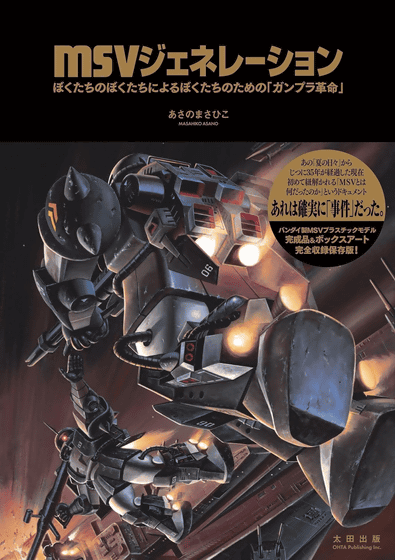
Related Posts:







